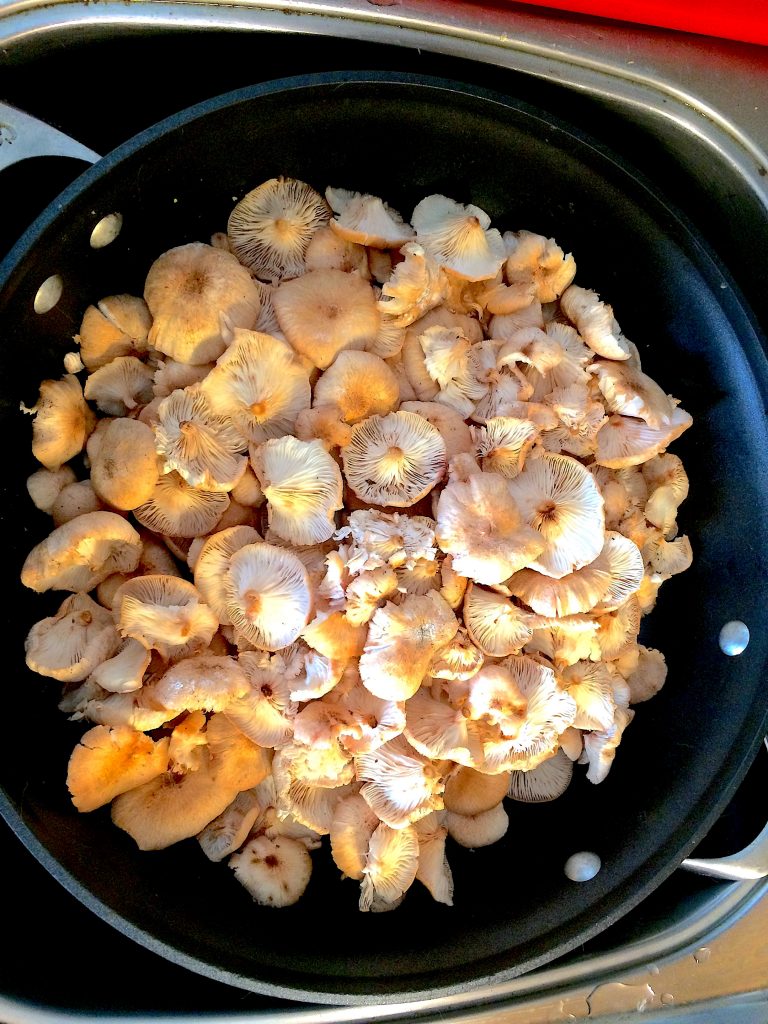
Ringless Honey Mushrooms, stems removed. Photo by Green Deane
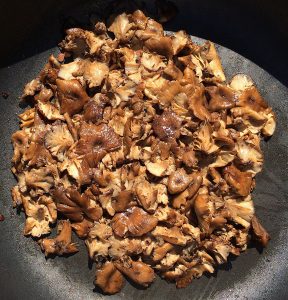
Cooked Ringless Honey Mushrooms have a good texture and taste. Photo by Green Deane
Learning about edible wild plants seem intimidating at first. Once you’re used to that folks usually move on to trees. They seem more difficult — big and all that — but in reality trees are easy compared to herbaceous plants. And about the time you are comfortable with plants and trees you tackle edible grasses. Let it be known that grasses are tough. It’s a herculean task. Usually folks give up satisfying themselves with a few local species and letting the thousands of other species remain anonymous. …And then you tackle mushrooms. They are easier to learn than grasses but are admittedly perhaps more dangerous. (I would say more dangerous but I am already accused of promoting mycophobia because I am mostly interested in edible mushrooms.)
One thing that makes mushrooms more difficult to study than other wild edibles is their comparatively short life cycle. They can come and go in just a few hours. It’s difficult to see them when young, middle aged, and old. And like grasses, there is a whole new dictionary of terms to learn. But it can be done. You can become familiar with local edible mushroom species and forage with confidence. Coming into season now are Ringless Honey Mushrooms.
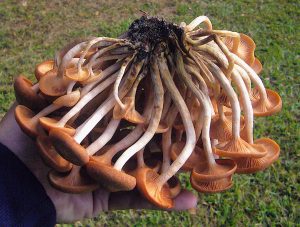
Honey Mushrooms grow from one center point. Photo by Green Deane
Opinions on the value of these annual fungi vary from “choice” to “not edible.” I like the flavor and texture of the cooked caps and have no problem with them. Some people have to took them longer than usual or they get digestive upset. Some people just can’t eat them but that is true of many mushrooms and plants. The tough stems are usually used to make broth. These Honeys are fairy easy to identify: They are … honey… colored, grow on wood, have a white spore print, have gills that descend down the stem, have a stem that tapers towards the base, do not have a ring on the stem, usually grow in a bunch and are “cespitose.” That means they all grow out of one point, like a bouquet is arranged. To read more about the Ringless Honey Mushroom go here.
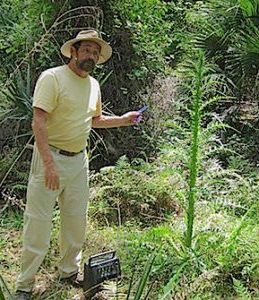
Foraging classes are held rain, shine, hot or cold. Photo by Nermina Krenata
Foraging Classes: One class this weekend, way down in Ft. Pierce at George Lastrange Preserve. Have folks already signed up so the class should go on as scheduled.
Saturday, October 27th, George LeStrange Preserve, 4911 Ralls Road, Fort Pierce, FL, 34981. 9 a.m. to noon.
Saturday, November 3rd, Bayshore Live Oak Park, Bayshore Drive. Port Charlotte, 9 a.m. to noon. Meet at the parking lot of Ganyard Street and Bayshore Road.
Sunday, November 4th Blanchard Park, 10501 Jay Blanchard Trail, Orlando. 9 a.m. to noon. Don’t forget the clock turned back an hour last night.
Saturday, November 10th, Boulware Springs Park, 3420 SE 15th St., Gainesville, FL 32641. 9 a.m. to noon.
Sunday, November 11th, Dreher Park, 1200 Southern Blvd., West Palm Beach, 33405, West Palm Beach, FL 32641. 9 a.m. to noon. Meet just north of the science center.
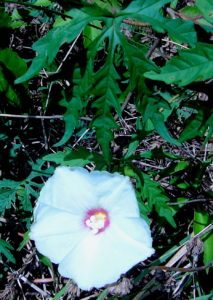
The small incised Alamo Vine, Merremia dissecta, has the right coloring but does not have edible parts. Photo by Green Deane
I received a nice inquiry about eating “wild sweet potato” leaves. This is not a “loaded” question but it is nearly impossible to answer. Cultivated sweet potatoes, Ipomoea batata, are in the greater Morning Glory family. They do have edible leaves. Not great in flavor but edible. But once you move to other species in that family some members have edible leaves and at least one has cyanide in the leaves which is definitely not edible. So the question as asked cannot be safely answered because there’s no hint as to which species is being referred to. I can however, give a little bit of instruction regarding Ipomoeas.
What I have noticed, generally, is that edibility in this family tends to follow blossom color. So, when I see a blue Morning Glory blossom I ignore it. Usually nothing is edible about the
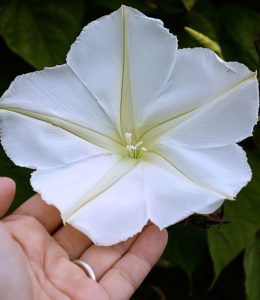
Ipomoea alba has edible parts.
plant though the seeds might be hallucinogenic. If I see a pink Morning Glory blossom it can go either way, usually not edible, but sometimes a famine food, same with a red blossom. If I see a small white Morning Glory blossom I ignore it. A local one, the Alamo Vine, photo upper right, has cyanide. But if I see a large white Morning Glory blossom or a large white Morning Glory blossom with a ruby throat I investigate it. Usually something is edible about the plant. It might be the blossom, leaves, root, or the entire plant depending on the species. For this discussion I would consider two inches across the petals and under small. Large is often three inches across and four to six inches long. With this rough guide you can from a distance glance at a Morning Glory blossom and know whether to look further. To read more about Morning Glories go here.
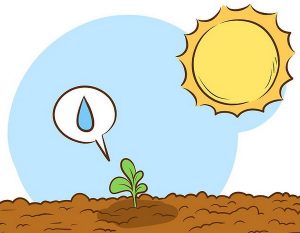 Donations to upgrade EatTheWeeds.com and fund a book have gone well and made it past the half way mark. Thank you to all who have contributed to either via the Go Fund Me link, the PayPal donation link or by writing to Green Deane POB 941793 Maitland FL, 32794. There are many needs left such as expanding the foraging teacher page and the page on monotypic edibles. Several functions were also lost when we transitioned to the new website. There’s always something and such things get more complex and expensive every year.
Donations to upgrade EatTheWeeds.com and fund a book have gone well and made it past the half way mark. Thank you to all who have contributed to either via the Go Fund Me link, the PayPal donation link or by writing to Green Deane POB 941793 Maitland FL, 32794. There are many needs left such as expanding the foraging teacher page and the page on monotypic edibles. Several functions were also lost when we transitioned to the new website. There’s always something and such things get more complex and expensive every year.
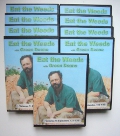
Green Deane DVD set of 135 videos
All of Green Deane’s videos are available for free on You Tube. They do have ads on them so every time you watch a Green Deane video I get a quarter of one cent. Four views, one cent. Not exactly a large money-maker but it helps pays for this newsletter. If you want to see the videos without ads and some in slightly better quality you can order the DVD set. It is nine DVDs with 15 videos on each for a total of 135 videos. Many people want their own copy of the videos or they have a slow service and its easier to order then to watch them on-line. The DVDs make a good gift for that forager you know especially on long, cold winter months. Individual DVDs can also be ordered or you can pick and choose. You can order them by clicking on the button on the top right hand side of this page (if your window is open wide enough.) Or you can go here.
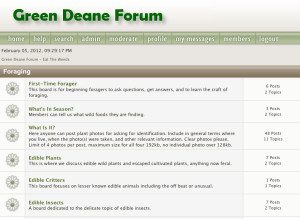
Green Deane Forum
Want to identify a plant? Need to identify a plant? Looking for a foraging reference? Maybe you have a UFO, an Unidentified Flowering Object, you want identified. On the Green Deane Forum we — including Green Deane — chat about foraging all year. And it’s not just about warm-weather plants or just North American flora. Many nations share common weeds so there’s a lot to talk about. There’s also more than weeds. The reference section has information for foraging around the world. There are articles on food preservation, and forgotten skills from making bows to fermenting food. Recent topics include: I Finally Found Wapato, Looks like Corn, Weed With Pod At Top, A Mile Walk In The Woods, Chicken of the Woods?, Elderberry Fungus, Spurge Nettle 2018, Does Anybody Know This Berry, and Five-Minute “English” Muffin with Beautyberries. You can join the forum by clicking on the button in the menu line.
This is weekly issue 327.
If you would like to donate to Eat The Weeds please click here. Or you can use my Go Fund Me link, or by writing to Green Deane POB 941793 Maitland FL, 32794


Hi Dean,
We sure would love to forage and learn with you here in the Tallahassee area in the not too distant! Any possibility?
Cheers,
Bob